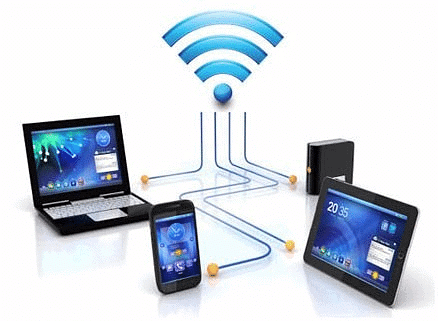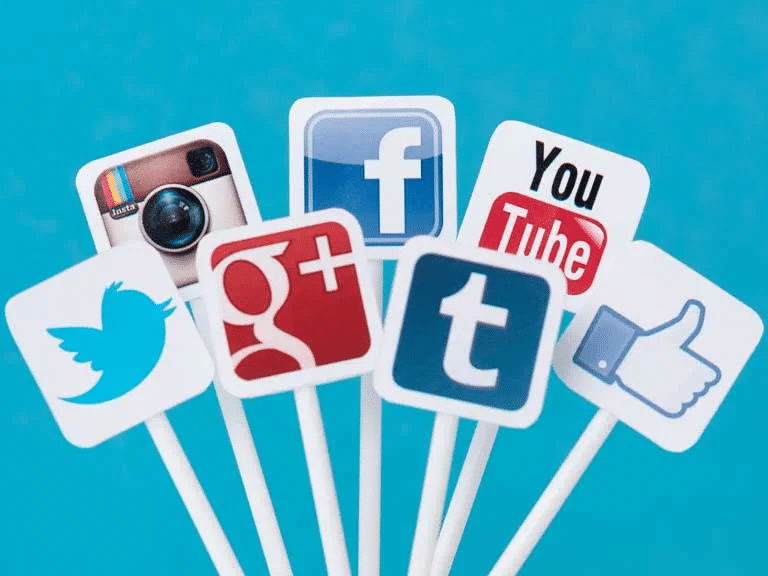Internet | General Awareness for SSC CGL PDF Download
Introduction

The development of the internet and related technologies has transformed communication, business, and daily life globally. This overview will explain the evolution of internet technologies, notable protocols, and related services, focusing particularly on India’s progress and technological advancements.
Internet vs Intranet vs Extranet
- Internet: A global system of interconnected networks.
- Intranet: A private network within an organization.
- Extranet: An extended intranet that allows controlled access to external users
Browser vs Search Engine
- Browser: A software application used to access websites (e.g., Chrome, Firefox).
- Search Engine: A tool that helps locate information on the web (e.g., Google, Bing).
Internet Development
- ARPANET and Internet Protocols: The foundation of the internet began with ARPANET, which led to the creation of protocols for network interconnection. These protocols allowed diverse networks to connect, forming a network of networks, which we now know as the internet.
Internet in India
- Initial Launch: Internet services in India began on August 15, 1995, with Videsh Sanchar Nigam Limited (VSNL) introducing internet access to the country.
- Broadband Policy: In 2004, India’s government established a Broadband Policy defining broadband as an internet connection with a minimum download speed of 256 kilobits per second (kbps). Since 2005, the broadband sector in India has seen significant growth.
- Digital India Initiative: Launched on July 1, 2015, Digital India is a comprehensive program aimed at improving infrastructure, governance, and citizen empowerment through digital means. Its mission is encapsulated in the slogan "Power to Empower."
Internet Protocols

- Transmission Control Protocol/Internet Protocol (TCP/IP): This is the fundamental protocol for internet communication, enabling data exchange across networks.
- Hypertext Transfer Protocol (HTTP): This protocol forms the basis of the World Wide Web, handling the transfer of web pages.
- Gopher Protocol: A protocol used for retrieving and distributing documents on the internet before the widespread use of the World Wide Web.
- File Transfer Protocol (FTP): FTP is used for transferring files between computers over a network, such as the internet.
- Telnet: This protocol allows users to connect and interact with remote computers via the internet.
- Usenet: A global distributed discussion system organized into newsgroups based on topics.
- SMTP (Simple Mail Transfer Protocol): Used for sending emails.
- POP (Post Office Protocol): Used for retrieving emails.
- IMAP (Internet Message Access Protocol): Allows access and management of emails from multiple devices.
- DNS (Domain Name System): Translates domain names into IP addresses.
Internet Connections

- Broadband: Refers to high-speed internet connections with data transmission rates of 256 kbps or higher, compared to older dial-up methods.
- Wi-Fi (Wireless Fidelity): Technology that enables wireless data exchange using radio waves within a network.
- WiMax (World Wide Interoperability for Microwave Access): A wireless communication standard providing high-speed internet access, with data rates ranging from 30 to 40 Mbps and up to 1 Gbps for fixed locations.
- LiFi (Light Fidelity): A cutting-edge technology using light waves for data transmission, offering speeds up to 10,000 times faster than traditional radio-based communication.
- Internet Telephony (VoIP): Voice over Internet Protocol allows users to make phone calls using the internet rather than traditional phone lines. This category includes various hardware and software tools for internet-based telephony.
- Wireless Internet Protocols: These protocols, evolving from the Wireless Application Protocol (WAP) 2.0, support mobile internet connectivity.
- Remote Area Business Message Network (RABMN)
- RABMN: A satellite-based network providing instant data communication to remote parts of India, ensuring connectivity where traditional networks may not reach.
- ERNET (Education and Research Network): Connects educational and research institutions across India, facilitating knowledge sharing and collaboration.
Cloud Computing
Cloud computing involves using the internet to store and access data and programs instead of relying on local computer storage.
Service Models
- Infrastructure as a Service (IaaS): Provides virtualized computing resources over the internet.
- Platform as a Service (PaaS): Offers a platform allowing customers to develop, run, and manage applications without dealing with the infrastructure.
- Software as a Service (SaaS): Delivers software applications over the internet on a subscription basis.
Important Internet Services
- E-mail: An electronic method of exchanging messages between users, integral to internet communication.
- P-Commerce (Place Commerce): A specialized form of mobile commerce that leverages mobile internet, GPS, and Bluetooth to enhance shopping experiences based on location and behavior.
- Video Conferencing: Enables meetings or training sessions with participants in different locations using audio and video technology.
Key Terms
- World Wide Web (WWW): Developed in 1989, the web is a system of interlinked hypertext documents accessed via the internet.
- Archie: The first tool used for searching the internet, predating modern search engines.
- Cookies: Small data stored on a browser by websites.
- Cache: Temporary storage to speed up browsing.
- Bandwidth: Amount of data transmitted per second.
- Latency: Delay in data transfer.
- Hyperlink: Clickable link to another document/webpage.
- Hypertext: Text containing links to other text or resources.
Internet Security
- Firewall: Monitors and controls incoming and outgoing network traffic.
- Proxy Server: Acts as an intermediary between user and internet.
- VPN (Virtual Private Network): Provides secure, encrypted connections over public networks.
- Malware Types: Virus, Worm, Trojan, Spyware, Ransomware.
- Cyber Threats: Phishing, Hacking, Cybercrime.
- Cyber Laws in India: IT Act, 2000 provides legal framework for cybercrimes and e-governance.
Social Networking Sites

- Facebook: A social networking service launched in February 2004 by Mark Zuckerberg, allowing users to connect and share content.
- LinkedIn: A platform for professional networking and career development.
- Myspace: A social networking site enabling users to create personal webpages and interact with others.
- Twitter: A microblogging service that allows users to post and read short messages called tweets, limited to 280 characters.
- Tumblr: A microblogging and social networking site where users can post content like text, photos, and links.
Web Search Engines
- Google: The most widely used search engine, offering comprehensive web search capabilities.
- Google Earth: A virtual globe and geographical information tool, originally called Earth Viewer 3D.
- YouTube: A video sharing platform owned by Google, launched in 2005.
- Lycos, Altavista, Hot Bot: Early search engines providing various search capabilities and multimedia file searches.
- Bing: Microsoft’s search engine, developed to compete with Google.
Information Technology (IT)
India’s IT industry, bolstered by its export-led software success, has become a key player in the global technology landscape.
- National Informatics Centre (NIC): A leading organization providing IT solutions to government and corporate sectors in India.
- Bio-Tech Information System Network (BTISNET): A network managed by the Indian Government’s Biotechnology Department, focusing on database and network organization for biotechnology.
- NICNET: NIC’s satellite-based network ensuring cost-effective and reliable communication.
- Nixi (National Internet Exchange of India): Facilitates domestic internet traffic exchange among ISPs in India, improving bandwidth efficiency.
- Software Technology Parks of India (STPI): Established in 1991 to manage infrastructure and provide services like technology assessment and professional training.
National e-Governance Plan (NeGP)
A plan to deliver government services electronically, enhancing accessibility and efficiency.
- e-Learning: Includes all forms of technology-supported education and training.
- e-Government: The provision of government services online.
- e-Parliament: A global forum connecting democratic legislators through the internet.
Digital Signature
An electronic method for signing documents to verify authenticity and ensure content integrity.
Information and Library Network (INFLIBNET)
An autonomous center improving university library systems and connecting them across India.
Digital Library
A library where collections are stored in digital format and accessed through computers, serving as an information retrieval system.
Augmented Reality (AR) and Virtual Reality (VR)
- Augmented Reality (AR): Enhances the real world with computer-generated sensory input like sound, video, and graphics, visible through devices like smartphones.
- Virtual Reality (VR): Creates an entirely artificial environment for users, providing immersive experiences through software and hardware.
- Differences: AR enhances the real world, while VR replaces it with a completely virtual experience.
|
478 videos|1421 docs|396 tests
|
FAQs on Internet - General Awareness for SSC CGL
| 1. What are some important Internet services that are commonly used? |  |
| 2. How does cloud computing work and what are its benefits? |  |
| 3. What are some popular social networking sites used in India? |  |
| 4. How do Internet protocols help in ensuring data is transmitted correctly? |  |
| 5. How do web search engines work and what is their importance in accessing information online? |  |
















